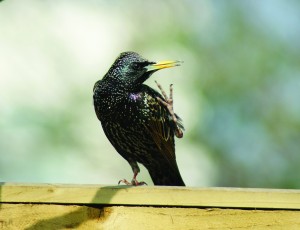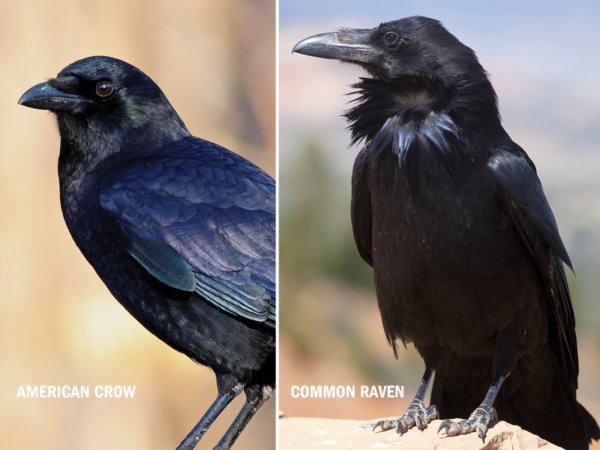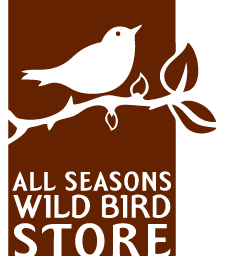Blackbird can be a misleading term! Though sharing a similar plumage, black-colored backyard birds come from several different biological families, including: Icteridae (Red-winged Blackbirds, grackles, and cowbirds) Sturnidae (European Starlings), and Corvidae (crows and ravens). Here’s a guide to common backyard black birds.
Family Icterid
Though Icterids are diverse in color and lifestyle, you can best identify them by their long, sharp bills. Icterids include many familiar black species of birds, such as grackles and cowbirds, but also include colorful birds like meadowlarks, bobolinks, and orioles. Common black Icterids, such as those shown above, often travel together in mixed flocks.
Red-winged Blackbird
This common backyard bird is usually the first of the summer migrants to arrive. The male Red-winged Blackbird has a red and yellow patch on its shoulder, but sometimes only the yellow shows. The female is more subdued in color, with a streaked brown body and white eyebrow. Red-winged Blackbirds love swamps and marshy areas. The bulk of their diet is insects, but they love almost any kind of birdseed available!
Common Grackle
The Common Grackle is another summer migrant to Minnesota. The male has a black body and an iridescent blue/black head. The females are similar to males, but smaller and a little duller. Grackles dine on fruit, insects, and, of course, birdseed.
Brown-headed Cowbird
Brown-headed Cowbirds are the only parasitic bird in Minnesota. Instead of building their own nests, females lay eggs in existing nests of other species, abandoning their young to be raised by unsuspecting foster parents. Like other blackbirds, Brown-headed Cowbirds are summer migrants to Minnesota. Males are a glossy black with a chocolate brown head. Females are slightly duller in color and have a streaked chest. Cowbirds eat insects and seeds, the latter which includes most any kind of birdseed.

Family Sturnidae
This family of non-native birds are sharp-billed, with shorter tails than icterids. The black Sturnidae you’re likely to spot in your neighborhood is the European Starling.

European Starling
Although nonnative, European Starlings reside in Minnesota year-round. in the fall and winter, starlings are an iridescent purple/ black covered with white speckles. As their feather tips wear in the spring and summer, the white speckles disappear, and they take on an all-iridescent purple/black appearance. Their bills also European Starling change color: from grayish in the fall, to yellow in the spring. Females and males model the same colors. Their diet includes insects, and all the bird seed and suet they can find.
Family Corvidae
Their large size, long and strong bill, and nostrils covered by forward-pointing bristles characterize this family of perching birds. Aside from black birds such as crows and ravens, the Corvidae family also includes jays and magpies.
American Crow
The American Crow is a large (18″) bird with an all-black body, bill, legs and feet. Males and females look alike. This highly intelligent bird—it’s been observed using tools to obtain food and even inventing games—eats fruits, insects, mammals, fish, carrion and anything put out in a bird feeder.
Common Raven
The Common Raven is larger than the American crow (24″) with a large, powerful bill. More slender and less social than crows, ravens are more commonly found farther north in Minnesota. Among the smartest of all birds, the raven is a terrific problem solver. ■
From the Bird’s-Eye View Archives: July/August 2011
Article written by MELISSA BLOCK


